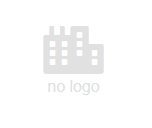
Nom de l'article:
Ethyl Acrylate
Description:
Ethyl acrylate is an organic compound with the formula CH2CHCO2CH2CH3. It is the ethyl ester of acrylic acid. It is a colourless liquid with a characteristic acrid odor. It is mainly produced for paints, textiles, and non-woven fibers.[5] It is also a reagent in the synthesis of various pharmaceutical intermediates. Ethyl acrylate, stabilized appears as a clear colorless liquid with an acrid odor. Flash point 60°F. May polymerize exothermically if heated or contaminated. If the polymerization takes place inside a container, the container may rupture violently. Auto ignition temperature 721°F (383°C) (NTP). Less dense than water. Vapors heavier than air. Used to make paints and plastics. Formula: CH2CHCOOC2H5
Groupe:
Other Specialties
Numéro CAS:
140-88-5
Numéro EC:
205-438-8
Synonymes:
EA, Ethyl Acrylate, Elvaloy® AC 2116, Ethyl acrylate, 15ppm MEHQ, Ethylacrylate, Ethylacrylate, Ethyl acrylate, 15ppm MEHQ, Ethylacrylate, Acrylic acid ethyl ester; EA, Ethyl acrylate, 15ppm MEHQ, Ethyl Acrylate (EA) bio-based
Applications:
Paint, Automotive Care, Plastics, Food, Textile, Detergent
Nom d’après UICPA:
ethyl prop-2-enoate
Formule moléculaire:
C5H8O2
Masse moléculaire:
100.12 g/mol
Point d’ébullition:
99ºC
Point d’éclair:
16ºC
Point de fusion:
-71ºC
Solubilité:
15 mg/mL at 25 °C (water)
Densité:
0.92 g/cm3
Classe de danger:
3
Code SH:
2916122000
RID/ADR:
UN 1917
Déclarations de risques:
R11; R20/21/22; R36/37/38; R43
Déclaration de dangers:
H225; H302 + H312; H315; H317; H319; H331; H335; H412
Mise en garde:
P210; P261; P273; P302 + P352 + P312; P304 + P340 + P312; P403 + P233
Signaux:
Danger
Fournisseur(s): 60
Ethyl Acrylate
Expédition est disponible

Yuan Jen (Taiwan)
Taiwan, Province of China
Ethyl Acrylate
Expédition est disponible
Ethyl Acrylate
188
Kg
Expédition est disponible

Univar Solutions GmbH
Germany
Ethyl Acrylate
Expédition est disponible

UNIVARSOLUTIONS
United States of America
Ethyl Acrylate
Expédition est disponible

UAB SynHet
Lithuania
Ethyl Acrylate
Expédition est disponible

Traditem GmbH
Germany
Ethyl Acrylate
min. 99.5%
Expédition est disponible

Traditem GmbH
Germany
Ethyl Acrylate (EA) bio-based
min. 99.5%
Expédition est disponible

TECKREZ INC
United States of America
Ethyl Acrylate
Expédition est disponible

Soyventis North America LLC
United States of America
Ethyl Acrylate
Expédition est disponible
Ethyl Acrylate
Expédition est disponible
Ethyl Acrylate
Expédition est disponible

Shin-Etsu
United States of America
Ethyl Acrylate
Expédition est disponible
Ethyl Acrylate
Expédition est disponible

SYNTHOMER
United States of America
Ethyl Acrylate
Expédition est disponible

SUMITOMOCORP
Germany
Ethyl Acrylate
Expédition est disponible

STOCKMEIER HOLDING GMBH
Germany
Ethyl Acrylate
Expédition est disponible

STANLAB
Poland
Ethyl Acrylate
Expédition est disponible

Rebain International NL
Netherlands, Kingdom of the
Ethyl Acrylate
Expédition est disponible

Radchem Products, Inc.
United States of America
Ethyl Acrylate
Expédition est disponible

RT VANDERBILT HOLDING CO INC
United States of America
Ethyl Acrylate
Expédition est disponible

QUIMIDROGA S.A.
Spain
Ethyl Acrylate
Expédition est disponible

Prochema GmbH
Austria
Ethyl Acrylate
Expédition est disponible
Ethyl Acrylate
Expédition est disponible

OQEMA
Germany
Ethyl Acrylate
Expédition est disponible

Novasol Chemie GmbH
Germany
Ethyl Acrylate
Expédition est disponible
Ethyl Acrylate
Expédition est disponible

Nanjing Lanya Chemical
China
Ethyl Acrylate
Expédition est disponible

Möller Chemie GmbH & Co. KG
Germany
Ethyl Acrylate
Expédition est disponible
Ethyl Acrylate
Expédition est disponible

Matrix Fine Chemicals GmbH
Switzerland
Ethyl Acrylate
Expédition est disponible

MT Chemtech
Japan
Ethyl Acrylate
Expédition est disponible

MEGACHEM LIMITED
Singapore
Ethyl Acrylate
Expédition est disponible

KH Chemicals BV
Germany
Ethyl Acrylate
20
Kg
Expédition est disponible
Ethyl Acrylate
Expédition est disponible
Ethyl Acrylate
Expédition est disponible

Julius Hoesch GmbH & Co. KG
Germany
Ethyl Acrylate
Expédition est disponible

Intrachem Limited
Ireland
Ethyl Acrylate
Expédition est disponible

Integra Petrochemicals Europe AG
Switzerland
Ethyl Acrylate
Expédition est disponible

IMCD Deutschland GmbH
Germany
Ethyl Acrylate
Expédition est disponible
Ethyl Acrylate
Expédition est disponible

HighChem Company LTD.
Japan
Ethyl Acrylate
Expédition est disponible

HARKE Chemicals GmbH
Germany
Ethyl Acrylate
Expédition est disponible

Greenchem
United States of America
Ethyl Acrylate
140-88-5
DDP
USA, Canada, Mexico
Expédition est disponible

GJ Chemical
United States of America
Ethyl Acrylate
Expédition est disponible

ECEM European Chemical Marketing bv
Netherlands, Kingdom of the
Ethyl Acrylate
Expédition est disponible
Ethyl Acrylate
Expédition est disponible
Ethyl Acrylate
Expédition est disponible

Chemicals United B.V.
Netherlands, Kingdom of the
Ethyl Acrylate
Expédition est disponible

COUNT Energy Distribution
Germany
Ethyl Acrylate
Expédition est disponible
Ethyl Acrylate
Expédition est disponible

Brenntag GmbH
Germany
Ethyl Acrylate
Expédition est disponible

Bazayan & Co
India
Ethyl Acrylate
Expédition est disponible

BCD Chemie GmbH
Germany
Ethyl Acrylate
Expédition est disponible

BASF CORPORATION
Germany
Ethyl Acrylate
Expédition est disponible

BARENTZ
United States of America
Ethyl Acrylate
Expédition est disponible

Apollo Scientific LTD
United Kingdom
Ethyl Acrylate
Expédition est disponible

ARKEMA Group
Germany
Ethyl Acrylate
20
Kg
Expédition est disponible

ALTEQO
Netherlands, Kingdom of the
Ethyl Acrylate
Expédition est disponible

ALL Chemistry Inc.
United States of America
Ethyl Acrylate
Expédition est disponible
